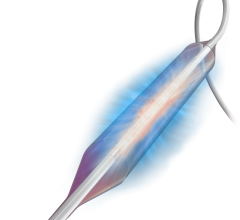September 30, 2013 --CardioLogical Solutions announced that it has been issued two additional patents for its family of aortic embolic protection devices designed to prevent stroke and other ischemic complications. The new patents include its first issued patent for its Emboline CAP technology, the only aortic embolic protection solution to offer comprehensive arterial protection, as well as a further patent for its broad embolic deflector intellectual property portfolio. CardioLogical Solutions now has four issued patents for aortic embolic protection.
The aortic embolic protection technologies of Emboline and the large-hole access and closure technologies of VasoStitch form the initial core of a suite of accessory devices offered by CardioLogical Solutions to address the clinical needs of emerging interventional cardiology procedures. The technologies of CardioLogical Solutions are derived from intellectual property invented by serial entrepreneur Amir Belson, M.D., founder of NeoGuide Systems, Vascular Pathways, Zipline Medical, Thermocure and Radguard Medical.
“These newly issued patents afford CardioLogical Solutions additional IP protection for its critical accessory technologies aimed at the TAVI community today,” said David W. J. Smith, CEO. “Indeed, our two initial platforms of procedural accessory devices address the most pressing clinical needs in the rapidly growing evolution of transcatheter aortic valve implantation (TAVI) therapies: specifically, a dire need for nonsurgical, large-hole (>12 Fr) access and closure technologies, and aortic embolic protection devices for prevention of stroke and other ischemic complications.”
CardioLogical Solutions is currently in the advanced stages of raising a Series B preferred round to achieve CE mark for its initial Emboline and VasoStitch products. First commercial sales are estimated in the ninth calendar quarter following close of funding, beginning with the European launch of the first VasoStitch product, followed by the European launch of the first Emboline device approximately six months later.


 April 25, 2023
April 25, 2023 








